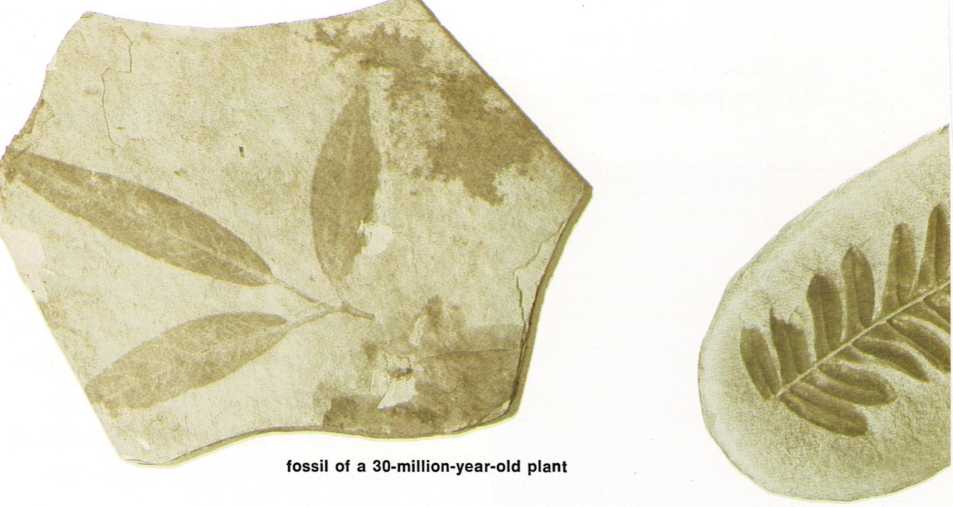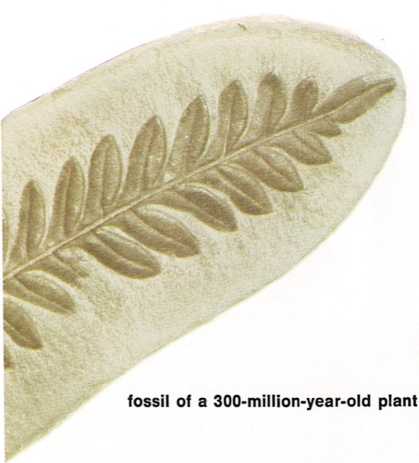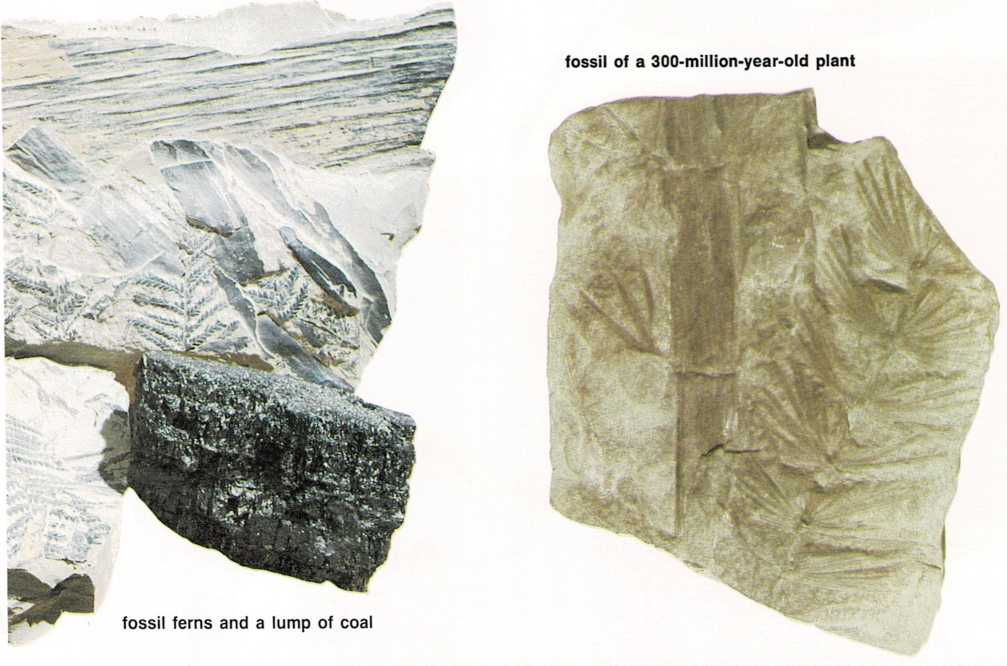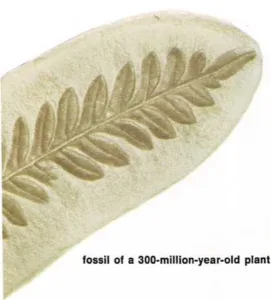
Looking at plants of long ago
How would you like to see a real leaf that might have been touched by
a dinosaur—a leaf that’s more than 100 million years old? It seems
almost impossible, but such leaves really have been found!
Leaves of long-ago plants fell to the ground, just as leaves do today.
Sometimes the leaves fell into streams and rivers. The water carried
them along and finally buried them in mudbanks.
After many years the streams dried up. The mudbanks hardened into rock.
And the leaves were pressed tight inside the rock. But by soaking the
rock with acid, and splitting it, we can see the leaves— leaves that
still have the same shape they had millions of years ago I

Sometimes leaves and other parts of long-ago plants left prints in the
mud, just as you can make a print by pressing something into clay. When
the mud hardened into rock, the prints were still there. And sometimes
leaves, flowers, and even tree trunks were turned into coal or stone.
All these leaves, and prints, and parts of plants that have changed to
stone and coal are called fossils. And it is from these fossils that we
know what the plants of long ago were like.


